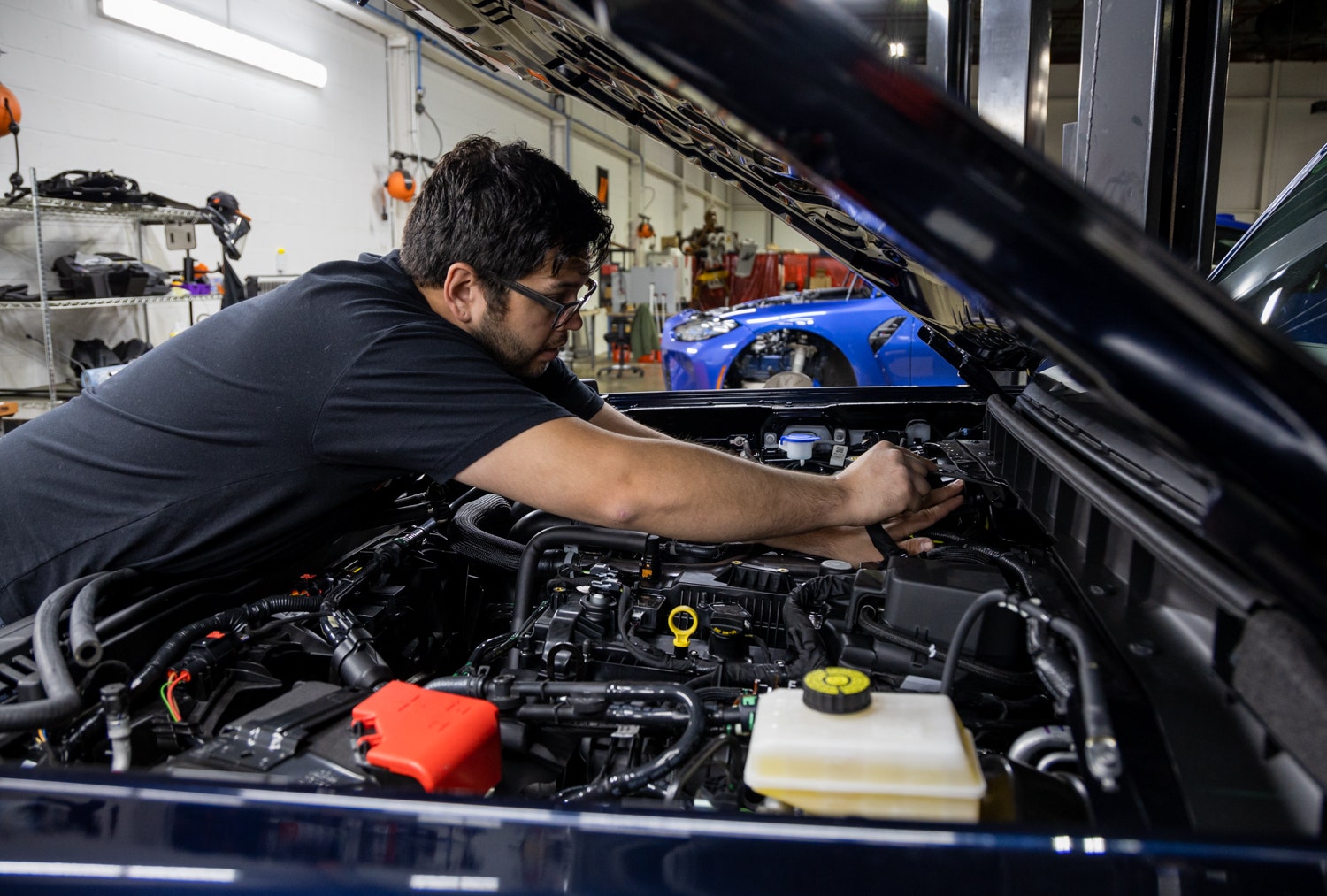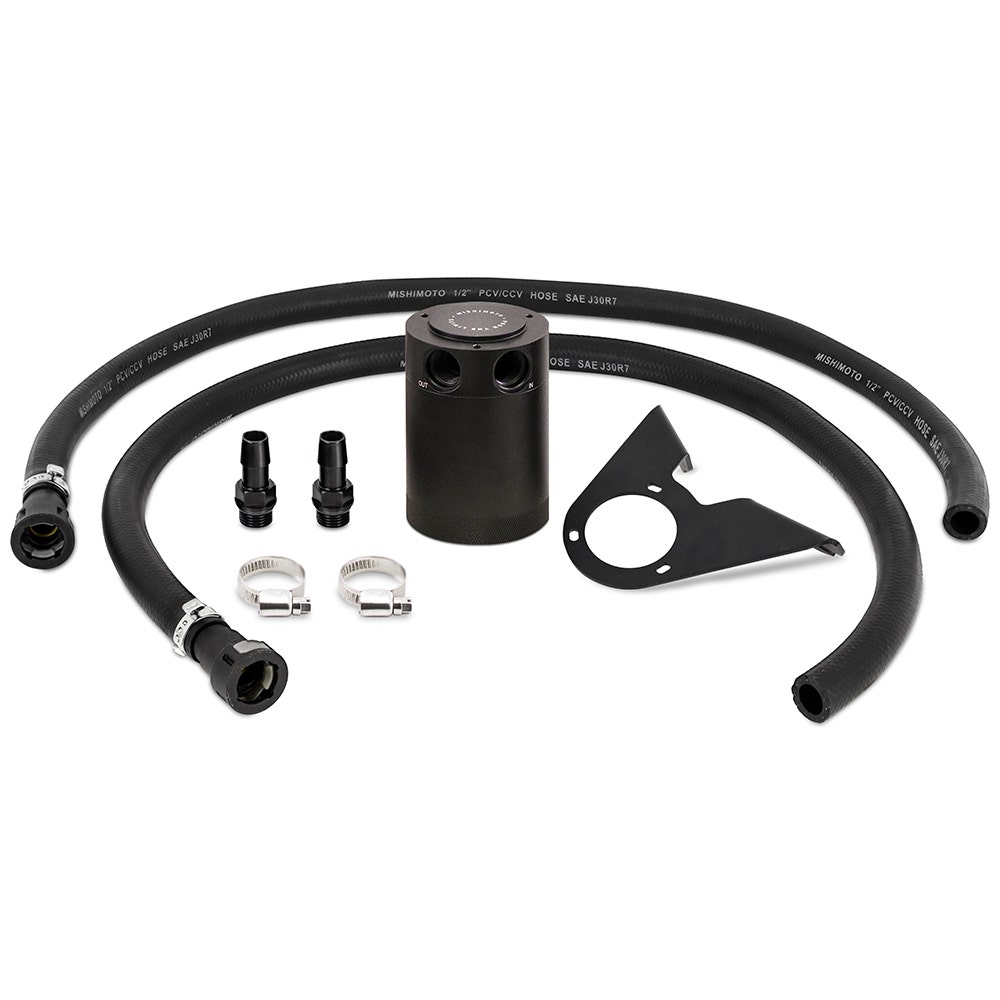
True Heart - 2021+ Ford Bronco 2.3L Baffled Oil Catch Can R&D, Part 1 - Concept and Prototype
When manufacturers launch their new vehicle platforms, like the Bronco's highly anticipated return, it's often linked with the flagship engine option that makes it the "true version" of that vehicle. A second, much more budget-friendly powerplant option is often available but carries the stigma of being an imposter. When it comes to the Bronco, though, this couldn't be further from the case.

The 2.3L EcoBoost nestled under the hood might be two cylinders and one turbo short of the highfalutin 2.7L twin-turbo V6, but this buff four-banger was already good enough to dominate the mid-sized truck market by being the only engine option for the Ranger. The 270 horsepower and mighty 309 ft/lbs of torque matched with the mind-bending off-roading capabilities make this iteration of the Bronco more than qualified to hold that heavy mantle. Unfortunately, as capable as this powerplant is, it still does fall short in other ways, specifically when it comes to engine blow-by and carbon buildup.
For those unfamiliar with the term 'blow-by,' make sure that you head over to our full-length technical article for the extended version of what it is and what it does to your engine. The short answer on both of those subjects is that blow-by is the side effect of internal combustion. During the engine's power stroke, some of the gasses that propel the piston to the bottom of the cylinder will slip past the piston rings, which pressurize the crankcase. That pressure is relieved by recirculating air from the crankcase back through the intake system via the positive crankcase ventilation, or PCV, valve. In theory, it makes perfect sense and mostly works in practice as well.

We say mostly because that recirculated pressure carries contaminants in the form of fuel vapors and oil droplets. This mixture is known as blow-by production. As you rack up mileage on your 2.3L Bronco, the blow-by sticks to critical top-end components and eventually turns into sticky carbon buildup. Specifically, the intake valves are the most vulnerable, and sticky components mean a less potent and efficient engine, combined with a higher likelihood of engine knock.
Unfortunately, it's the technology that makes the 2.3L such a heavy hitter that makes it especially prone to high blow-by. Direct injection coupled with turbocharging and high compression ratios make for big, efficient power in a small package, but it leaves those intake components defenseless. Higher cylinder pressures from turbocharging and a high compression ratio make the engine more prone to gasses making their way to the crankcase and higher chances of blow-by. Couple that with removing the intake valves' detergent-rich fuel bath, and this EcoBoost is sure to be fussy in its later years.
Ford and other OEMs are very aware of the pitfalls of blow-by making its way through the intake system. In some cases, expensive valve cleaning jobs are worked into the maintenance schedule. In this case, air-oil separators are incorporated into the PCV valve to mitigate that murky stuff from making its way to the intake tract. While these AOS systems do put the work in, from our experience, they don't always work as intended. You're in luck, though, since we're working on a third option to keep your 2.3L EcoBoost running smoothly.

Catch cans are a perfect option for keeping blow-by out of our intake tract. The concept behind these kits is to mount them in line with the PCV system to collect the blow-by before it's spattered all over the intake valves. Our catch cans work as an expansion chamber, complete with a baffle that slows the airflow to condense the fuel and oil vapors, with only fresh, clean air completing the journey to the intake.

It sounds like a great addition to your Bronco, right? We thought so too, and our engineer, Dave, was already under the hood of our 2.3L Bronco only moments after it rolled into the R&D facility. Locating the ideal mounting point and designing the application-specific bracket is typically the most arduous step in our development process, but thanks to the early arrival of our 2.7L Bronco, we were able to get a jump start on the mounting method.


With the mounting situated, we just needed to secure the lines to the PCV port. Like most four-cylinder EcoBoosts before it, the latest Bronco's PCV port is nestled at the base of the intake manifold and utilizes a pair of OEM-specific quick disconnect fittings. Normally, this would entail piecing together a pair of prototype lines while carefully extracting and repurposing the OEM connections. However, since this Bronco flaunts plenty of the 5th generation Ranger's DNA, we could utilize this design for our prototype and kick this kit's development into overdrive.


With the kit installed, there's only one more step for now " drive it. We send every vehicle out for a preliminary 1000-mile test cycle as part of every catch can kit development. This test allows us to check for two things. The first and most important is to ensure that we don't trip any unwanted check engine lights. The emissions systems on modern vehicles are getting more complex and sensitive with every release, and we need to check to make sure that our catch can doesn't jeopardize the operation of these systems. The second is to determine a service interval for our catch can"this test interval gauges how often the can will need to be emptied during real-world driving conditions. Head to our latest post for our testing results!

This kit is now available, make sure that you grab your kit today!
BAFFLED OIL CATCH CAN KIT, FITS FORD BRONCO 2.3L 2021+

Thanks for Reading!
-Nick




